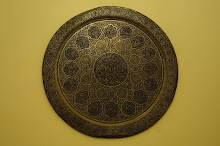
All over the world today, Christians will mark the resurrection of Jesus Christ. He was a man and a prophet who grew up in the Middle East, spoke a very Middle Eastern language, Aramaic, and had a very Middle Eastern name, Jesus, which comes from Yeshua, short for Yehoshua (or Joshua in other parts of the Bible).
Two thousand years after his reported time on Earth, his story from birth to crucifixion is one of the most well-known in the globe, and is the basis of worship for over 2 billion people. It may now be time for his story to experience a 'resurrection', an act that Alvin Boyd Kuhn sets out to do in his book 'A Rebirth for Christianity'.
With daring and conviction, Kuhn puts forward a message that is certainly controversial but worthwhile for any one interested in understanding their own purpose more deeply. The author argues that ancient texts were not written as historical chronologies but as an attempt to understand the meaning of events, a form of writing we now call myths.
The key to understanding these myths is to accept they are allegories - symbols that need to be interpreted - and are not in any way literal depictions. Kuhn applies this paradigm to the Gospels, and explains that the Christ of the New Testament is first and foremost an allegory for the development of any individual's spiritual consciousness (with great similarities to other such myths, especially those from Egypt). It is not therefore the history of a life of a man as most Christians understand it. For example, crucifixion is an allegory for the soul's tribulations as it suffers under the "wild instincts" of the flesh; resurrection, its rise to freedom from the shackles of its material prison.

This, he says, is the original message of Christianity: a Christian is not more nor less than someone who brings his spiritual potential to light. He or she utilizes intellect, reason, self-discipline and good judgment to discover his spiritual core, the "Christos" within - that divine potential within all of us that can make us "co-workers with God". This is no mean act, difficult to achieve and yet within it is the kernel of an unusual truth: in the grand scheme, God needs man as much as man needs God.
It may be more appealing, and easier, to think that there has only been one Christ, the man known as Jesus. But Kuhn argues that this view diminishes us by making us impotent to pursue our own salvation. If we project our spiritual power onto an outside figure, like Jesus, the essential power within us is denied. No amount of ritual, blind faith, recitation or automated acts can take the place of personal responsibility in this quest. It also means that all humans have the ability to pursue this goal, in all eras.
Furthermore, it is important to remember, in the Middle East and elsewhere, that it is rather a wrong turn, even a tragedy, for any people or nation to claim any monopoly on this universal mission. In our day, many have also forgotten that much of our religious heritage is allegorical, and requires interpretation not literal application. "The same myth in cruel hands becomes a goad to fanaticism", says Kuhn.
This approach to understanding the Christ did not penetrate sufficiently over the last two millennia, and it is necessary to try again to resurrect this work and reach beyond the literal story to allegory, and from there to the deepest truths about ourselves. Indeed, allegories, myths and stories are crucial for the eternal to reach the human mind; mistaking these symbols for direct truths is, sadly, a kind of idolatry.
As people celebrate Easter today, they may once again encounter one of the thousand ways that Jesus has been depicted since his time on earth. His many faces blur together, an image of humanity, a reflection of us all and our calling to seek the spiritual state within called Christ, Christos, Horus, Buddha, Krishna - a beckoning to a new kind of Easter.
"Though Christ a thousand times in Bethlehem be born
But not within thyself, thy soul will be forlorn;
The cross on Golgotha thou lookest to in vain
Unless within thyself it be set up again". (1)

(1) Angelus Silesius, Polish mystic and poet, 17th century













No comments:
Post a Comment